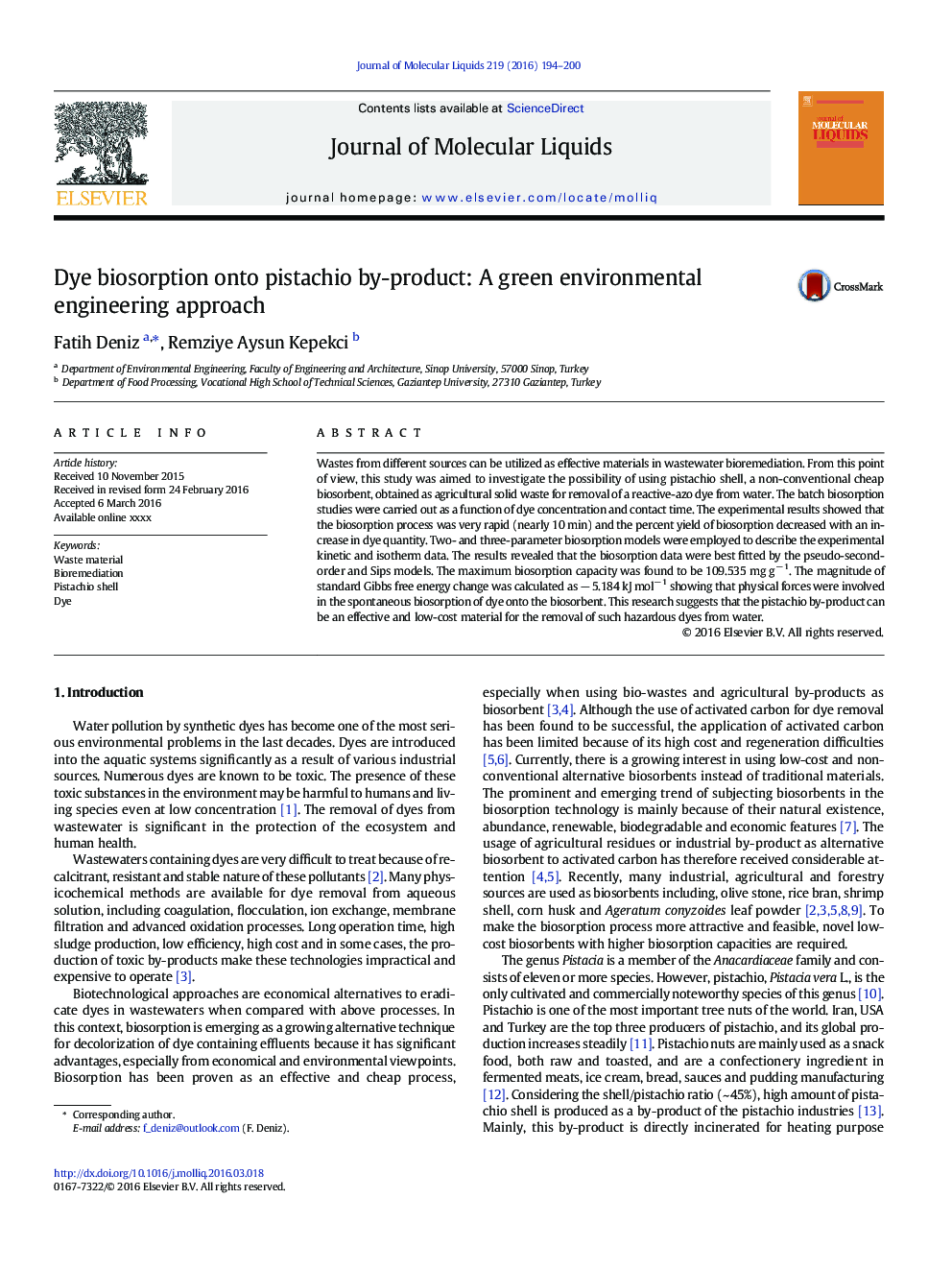| Article ID | Journal | Published Year | Pages | File Type |
|---|---|---|---|---|
| 5410110 | Journal of Molecular Liquids | 2016 | 7 Pages |
Abstract
Wastes from different sources can be utilized as effective materials in wastewater bioremediation. From this point of view, this study was aimed to investigate the possibility of using pistachio shell, a non-conventional cheap biosorbent, obtained as agricultural solid waste for removal of a reactive-azo dye from water. The batch biosorption studies were carried out as a function of dye concentration and contact time. The experimental results showed that the biosorption process was very rapid (nearly 10 min) and the percent yield of biosorption decreased with an increase in dye quantity. Two- and three-parameter biosorption models were employed to describe the experimental kinetic and isotherm data. The results revealed that the biosorption data were best fitted by the pseudo-second-order and Sips models. The maximum biosorption capacity was found to be 109.535 mg gâ 1. The magnitude of standard Gibbs free energy change was calculated as â 5.184 kJ molâ 1 showing that physical forces were involved in the spontaneous biosorption of dye onto the biosorbent. This research suggests that the pistachio by-product can be an effective and low-cost material for the removal of such hazardous dyes from water.
Related Topics
Physical Sciences and Engineering
Chemistry
Physical and Theoretical Chemistry
Authors
Fatih Deniz, Remziye Aysun Kepekci,
